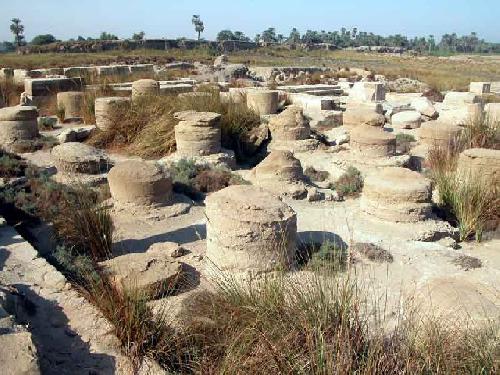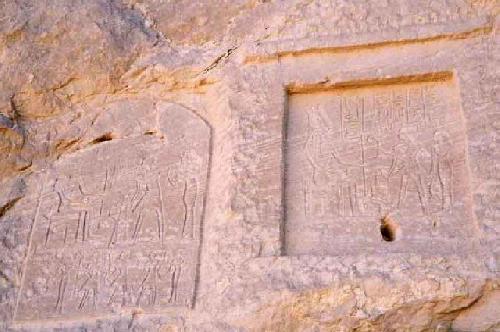El Kab

On the east bank of the Nile River lies El Kab, an archaeological site situated 90 km to the south of Luxor and 32 km to the south of Esna. In ancient times, its name was Nekheb, while the Greeks named it Eileithyiapolis. Just in front of El Kab, in the west bank, lies Kom El Ahmar or Ancient Nekhen or Hierakonpolis. Dating back to the Predynastic Period, both cities (El Kab and Kom El Ahmar) were religious centers of great importance in the Kingdom of Upper Egypt, before the unification of the country and the establishment of Memphis. In El-Kab, there is also a cemetery dating to the Civilization of Naqada III (toward 3300 BC), with many objects of the epoch as well as cemeteries from the Middle and New Kingdoms. The old city of El Kab was square-shaped, with a mud-bricks wall. In the center were erected two temples, one of which was dedicated to the vulture goddess Nekbet and hosted the crowning of ancient kings of Upper Egypt and the other was devoted to Sobek and Thoth. Here, there are also chapels of Amenophis III, Ramses II and Nectanebo. The major part of this archaeological site is now ruined, since the stones of the ancient building were reused as quarries.
In the archeological site of El Kab, there are various tombs dating back to the Middle and the New Kingdoms. These tombs provide us with rich information about the period of the Hyksos and the beginning of the Eighteenth Dynasty which led the liberation of the country. On the tombs of Ahmose, son of Abana, and that of Paheri there are unique military chronicles on the expulsion of the Hyksos.
More about El Kab
Cemetery 43
In Cemetery 43, 150 burials were found. Scholars hold the view that they belonged to the working class inhabitants of Nekhen, since less objects w...+
Read MoreTomb of Setau
Setau was the High Priest of Nekheb during the reign of Ramses III in the Twentieth Dynasty. Four steps lead down into the Tomb of Setau and on th...+
Read MoreTomb of Renni
Renni held the position of Nomarch of El Kab and Overseer of the Priests of Nekhbet during the reign of Amenhotep I, at the beginning of the Eight...+
Read MoreTomb of Paheri
Paheri was the Mayor of Nekheb and tutor of Prince Wadjmose, during the reign of Thutmosis III. From the scenes in the Tomb of Ahmose, Son of...+
Read MoreTomb of Ahmose, Son of Abana
Ahmose, son of Abana, was an officer and Captain of Sailors in the Egyptian army during the end of the Seventeenth Dynasty (the Sec...+
Read MoreTomb of Ahmose Pennekhbet
Ahmose Pennekhbet came from the city of Nekhbet and was buried there. Among his titles were the Overseer of the Seal of the Pharaoh, Hereditary Pr...+
Read MoreTemple of Amenhotep III in El Kab
To the east of the Vulture Rock in Wadi Hillal stands a small-structured temple built in the reign of Amenhotep III (of the 18th Dyn...+
Read MoreThe Temples of Thoth and Nekhbet at El-Kab
The Temples of Thoth and Nekhbet at el-Kab are two small structures dedicated to Nekbet (the Vulture goddess of Upper Egypt) and Thoth (the god of...+
Read MoreThe Vulture Rock
Further along the valley road, one can behold the Vulture Rock. It is so named because its shape –seen at a certain angle– resembles t...+
Read More




